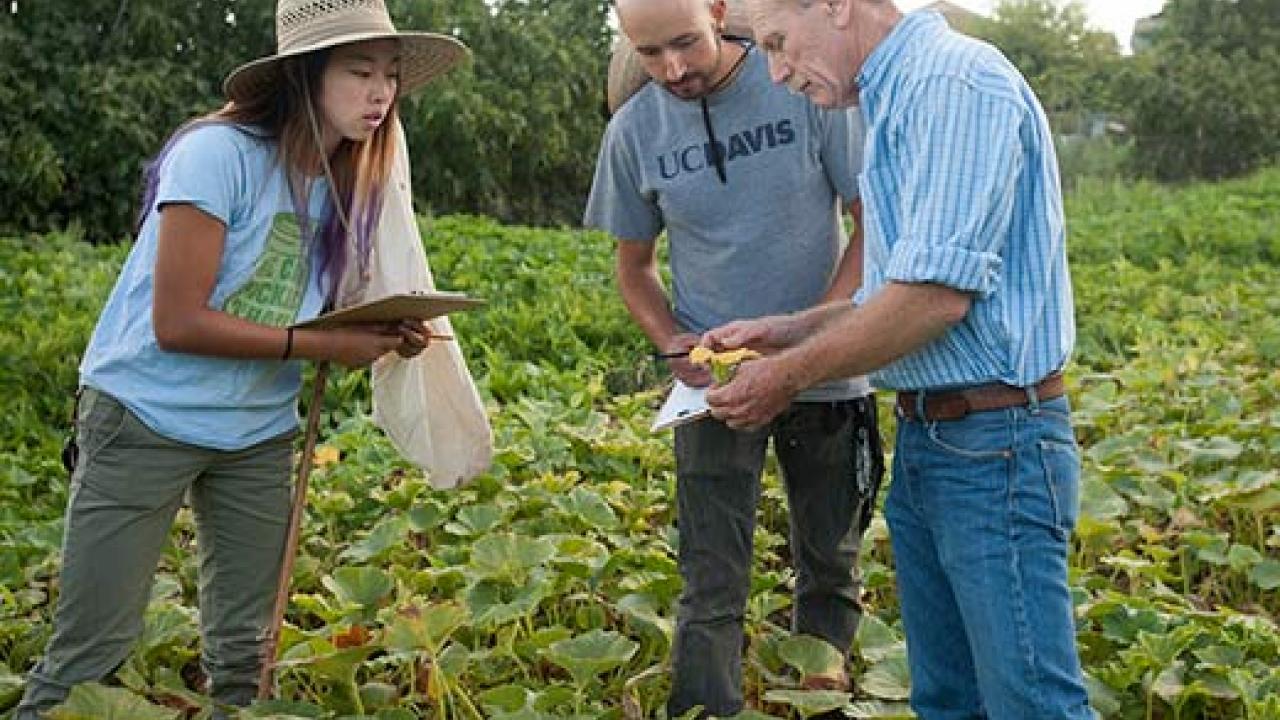So cool, so green! That’s what Sierra magazine says about the University of California, Davis — ranked No. 2 in the magazine’s 2015 “Cool Schools” report, released today (Aug. 11).
This makes four out of the past five years that UC Davis has been among the top five in the environmental magazine’s evaluation of sustainability efforts at U.S. colleges and universities. UC Davis was the No. 1 “Cool School” in 2012.
“We are happy for this recognition, and so proud of all the staff, faculty and students who make it happen year after year after year,” Chancellor Linda P.B. Katehi said. “The UC Davis community is not only dedicated to sustainability on our campus, but all around California, our nation and the world.”
Why UC Davis is green and cool, in seven categories:
Academics — UC Davis offers nearly 300 undergraduate classes about sustainability, including courses in agriculture, environmental policy, energy efficient design, transportation, restoration ecology, water law and marine science. UC Davis is No. 1 in agriculture and forestry (and veterinary medicine) in the QS World University Rankings by Subject for 2015, and the university consistently earns top-10 rankings in the environmental sciences.
Food — UC Dining Services’ produce supply is more than 70 percent local, including what the student-run Aggie Grown brings in from the Student Farm and the university’s Russell Ranch Sustainable Agricultural Facility. Food waste is turned into clean energy at an on-campus anaerobic digester, which uses technology invented by UC Davis Professor Ruihong Zhang.
Energy — The campus has reduced greenhouse gas emissions for four consecutive years. With an energy efficient lighting network and increased use of solar and other renewable energy, UC Davis buildings are using 28 percent less energy than they did eight years ago.
Waste — Roughly 80 percent of campus waste is diverted from landfills. UC Davis has a goal of zero waste by 2020.
Water — The Davis campus has saved more than 322 million gallons of water over the past year in all categories: domestic, utility (primarily landscape irrigation), agriculture and fishery. Using 2013 as a base year, campus water use is down nearly 32 percent in June and July of this year — beating the governor’s mandate for a 25 percent reduction in this fourth consecutive year of drought.
Conservation measures include turf conversions, low-flow fixtures in student housing and other buildings, and a switch to recycled water in four campus cooling towers that will save 61 million gallons of potable water a year.
Green buildings — UC Davis West Village, designed for about 3,500 students, staff and faculty, is the nation’s largest planned zero-net energy community. The university also boasts five LEED-platinum buildings (certified by the U.S. Green Building Council’s Leadership in Energy and Environmental Design program). They include the world’s first LEED-platinum winery, brewery and food processing complex.
Transportation — Three-fourths of all Aggies use alternative transportation, much of it pedal-powered — with more than 20,000 bicycles on campus on any given day. All those cyclists are rising around a campus that has platinum status as a Bicycle Friendly University, as designated by the League of American Bicyclists. The student-run Unitrans bus system — powered by compressed natural gas or biodiesel — provides more than 3 million rides per year.
Sierra compiled this year’s “Cool Schools” rankings by evaluating more than 150 schools that completed the magazine’s extensive survey about campus sustainability practices. Using a customized scoring system, Sierra’s researchers ranked the universities based on their commitment to upholding high environmental standards.
“We’re so inspired to see how colleges are taking the lead on addressing climate change,” said Avital Andrews, Sierra magazine’s lifestyle editor. “From building green to saving water to offering hundreds of eco-classes, these schools’ efforts are profound, and are changing not only the campus grounds, but also the minds of the students they’re educating.”
Five UC campuses are among the top-20 "Cool Schools," including Irvine in the No. 1 spot.
"The University of California absolutely dominates our ranking thanks to the system's remarkable commitment to sustainability, and its in-progress plan to be carbon-neutral by 2025,” Andrews said. “Other systems should look to the University of California as an example of how to effectively set attainable environmental goals and standards.”
The complete list of “Cool Schools” is available online: sierraclub.org/coolschools.
More green recognition
Last week, UC Davis earned a “green” score of 98 (out of 99) in the new edition of The Best 380 Colleges, published annually by The Princeton Review, a tutoring, test prep and college admission service company.
And in July, UC Davis received two best practice awards at the 2015 California Higher Education Sustainability Conference — one in the category of sustainable food service and the other in waste reduction.
Media Resources
Dave Jones, Dateline, 530-752-6556, dljones@ucdavis.edu
